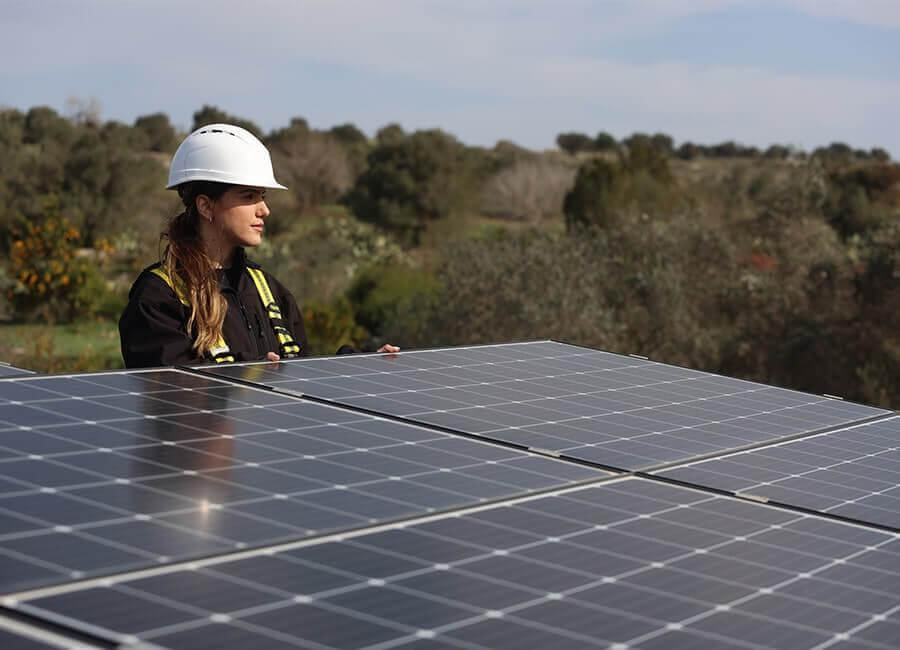What is Net Energy Metering (NEM)?
Net Energy Metering (NEM) is a billing arrangement that allows homeowners and businesses that have solar energy systems to send their unused electricity to the grid in exchange for credits.
In April 2023, the California Public Utilities Commission made a decision to modify the regulations pertaining to California Net Energy Metering (NEM) 3.0. As a result of this decision, the way homeowners are compensated for contributing energy to the grid has been influenced.
Thriving under NEM 3.0. with SolarEdge Home
Generate More Energy
SolarEdge Home systems bundle several technological advances including DC coupling, enabling you to generate more energy, store it more efficiently, and use more of it than any AC-coupled system.
Store More
Excess solar energy is stored directly and automatically into a SolarEdge Home Battery, without energy loss from DC-AC conversions.
Rate Saver Solution
Our battery management software adapts to NEM 3.0 rates, ensuring that you avoid importing grid power when rates are highest and instead use your stored power to save more money.

Grid is Down Power stays on
SolarEdge Home also keeps the power on during grid outages – delivering up to 20 consecutive days of system backup
SolarEdge Home systems bundle several technological advances including DC coupling, enabling you to generate more energy, store it more efficiently, and use more of it than any AC-coupled system.
Excess solar energy is stored directly and automatically into a SolarEdge Home Battery, without energy loss from DC-AC conversions.
Our battery management software adapts to NEM 3.0 rates, ensuring that you avoid importing grid power when rates are highest and instead use your stored power to save more money.
SolarEdge Home also keeps the power on during grid outages – delivering up to 20 consecutive days of system backup


Systems Installed Before NEM 3.0
NEM 2.0 was the billing structure in California up until April 15, 2023. Under NEM 2.0, customers who generate solar energy and feed excess electricity back into the grid are credited at the retail rate for the energy they export.
If you installed a solar energy system or got a design registered with your local utility company prior to April 14, 2023, you are locked into the more favorable export rates for 20 years.
The Value of Export Adders
NEM 2.0 was the billing structure in California up until April 15, 2023. Under NEM 2.0, customers who generate solar energy and feed excess electricity back into the grid are credited at the retail rate for the energy they export.
The rates that companies credit solar energy system owners, called ‘export rates’, are much less favorable than they were under NEM 2.0. To ease the transition, two of the power companies, PG&E and SCE, have introduced ‘export adders' – measured as cents per kilowatt hour added to your export credits.
These export adders are designed to reward early adopters of NEM 3.0 by easing the transition to significantly reduced export rates. These adders will keep decreasing 20% every year for five years, which means adopting the new net metering policy sooner will help homeowners lock in more lucrative export adders.
|
Feature |
NEM 2.0 |
NEM 3.0 |
|
Export Rate |
Full retail rate for exported energy |
Significantly reduced export rates based on hourly values that vary by month and day of the week |
|
True-Up Bill |
Annually |
Monthly |
|
System Oversizing |
Up to 100% of the previous 12 months' usage |
Up to 50% of the previous 12 months' usage |
|
Payback Period |
Solar only – most cost effective without backup |
Solar + Battery systems provide the ability to use all of your solar power in your home and provide outage protection |
California Low Income Incentive Plans
If you are finding it hard to budget for solar, California offers many solar incentives and programs.
These encourage solar adoption by making solar more affordable for low-income households.
Here are two popular California solar incentives.
Find out more
Single-Family Solar Homes (DAC-SASH)
The program provides access to affordable solar energy while also offering job training opportunities to qualifying individuals. If you live in one of the top 25 percent of most disadvantaged communities statewide and are a customer of Pacific Gas & Electric (PG&E), Southern California Edison (SCE), or San Diego Gas & Electric (SDG&E), you can qualify for DAC-SASH. There are income limits and other qualifications adjusted by annual CARE and FERA guidelines.
Find out more
Self-Generation Incentive Program (SGIP)
The program by the California Public Utilities Commission (CPUC) offers rebates to residential and non-residential facilities for installing energy storage technology. SGIP prioritizes communities living in high fire-threat areas, communities that have experienced two or more utility Public Safety Power Shut-offs (PSPSs), as well as low-income and medically vulnerable customers. The two categories of SGIP rebates, Equity and Equity Resiliency, significantly reduce the cost of energy storage. These rebates make energy storage nearly, if not completely, free of cost.
FAQs
Does NEM 3.0 Affect My Utility Bill?
As described above, NEM 3.0 only covers the three large public utility companies in California, PG&E, SCE and SDG&E. All other utilities have their own rates and regulations. Fortunately, you can consult with an authorized SolarEdge solar installer company that knows your area and the local regulations to evaluate your situation and make a recommendation based on your needs.
How does Pacific Gas & Electric (PG&E)’s net metering work?
PG&E’s Net Energy Metering (NEM) enables homeowners to reduce their monthly electric bill by generating electricity with their private rooftop solar energy system. With a special net meter, the difference between the amount of electricity produced by the system and the amount of electricity supplied by PG&E is calculated. The utility bill is calculated based on this difference, called net energy.
What is Southern California Edison's solar buyback rate?
Based on current market prices, the buyback rate or Net Surplus Compensation Rate offered by SoCal Edison is $0.07 cents per kWh. This is much less than the average rate charged by SDG&E which is why you want to maximize use of solar power at your own home.
How much does San Diego Gas & Electric (SDG&E) pay for excess solar power?
Based on current market prices, the SDG&E solar buyback rate is approximately $0.04 cents per kWh. This is much less than the average rate charged by SDG&E which is why you want to maximize use of solar power at your own home.
Does NEM 3.0 affect Los Angeles Department of Water and Power (LADWP) customers?
No, NEM 3.0 does not apply to homeowners receiving electricity from LADWP.
What Is The Best Way To Find Out If Solar Is Right For Me?
Best place to start is with a dependable experienced SolarEdge authorized installer.


